CEA Line Shows, Day 2
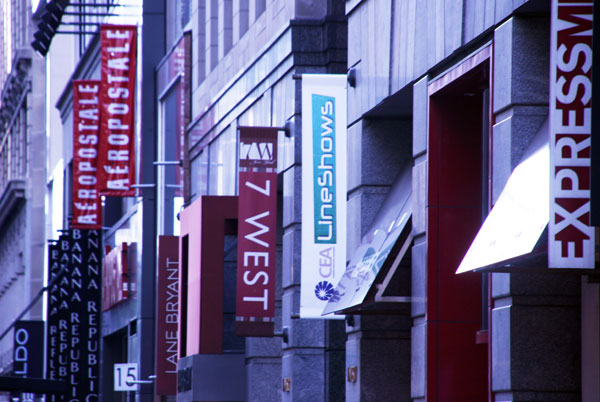
To be precise, Mitsubishi didn't exactly bow out of the showthere was one 3D DLP RPTV just outside the main press-conference room. Also, the company set up an extensive demo space at an off-site location, which I visited Wednesday morning.
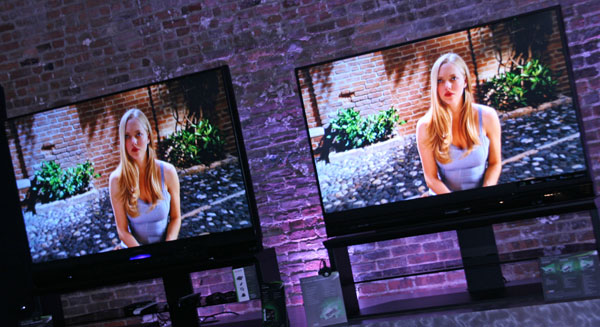
Of course, Mitsubishi is the last remaining maker of rear-projection TVs, which offer much larger screen sizes than flat panels can match at anywhere near the same price. And its 2010 Home Cinema lineup is the fourth generation with 3D capabilities using active-shutter glasses. In the past, this function has been based on DLP Link, which flashes a white frame periodically to sync the glasses, but the new sets can also use Samsung glasses with the addition of an optional IR emitter.
First announced at CES last January, the 3DA-1 3D adaptor is now available for $99. This small device accepts an HDMI signal from a 3D Blu-ray player or cable/satellite box and converts it into a format that Mits RPTVs can understand. The adaptor is also available in a starter pack with an IR emitter, two pairs of Samsung glasses, and a Disney 3D demo disc for $400. Oddly, Mitsubishi doesn't sell glasses individually.
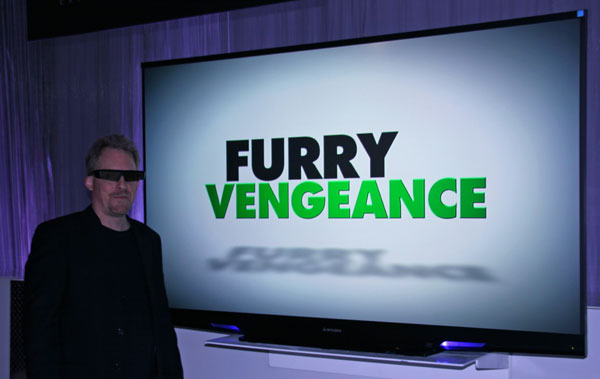
In another part of the venue was the second generation of LaserVue RPTVs, which uses red, green, and blue lasers to illuminate the image rather than a conventional white lamp and color-filter wheel. The new model sports a larger screen and lower price than last year75 inches for $6000 as opposed to 65 inches for $7000, though six grand is still a lot to pay for a free-standing rear-pro of any size. It also offers a digital-cinema color gamut to match the one used in commercial theaters, which is a great idea except for the fact that all Blu-rays are mastered in the slightly smaller Rec.709 gamut, so displaying them in the larger gamut is actually inaccurate for home viewing.
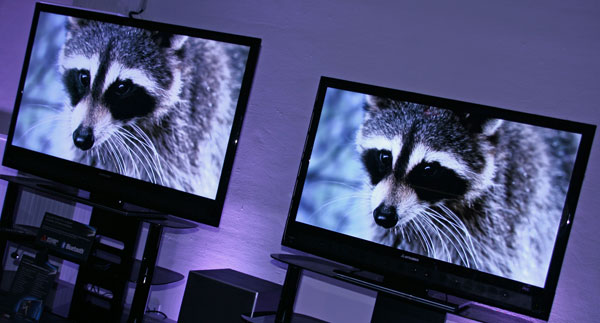
All of Mitsubishi's 2010 Unisen LCD TVs use LED edge lighting with screen sizes of 40, 46, and 55 inches. And all include the company's Immersive Sound Technology (IST), which consists of a soundbar that creates a surround soundfield by reflecting sound beams from the walls. A wireless sub from a company such as Polk can be added to boost the bass.
This year brings two new features to ISTsurround-channel preouts that let you connect powered surround speakers and a center-channel mode that lets you use the soundbar as a center speaker in a physical 5.1 setup. I was told that Mits engineers worked with a wide variety of left/right speakers to develop a reasonable tonal balance for this mode, but I have to say the demo didn't sound all that well-matched to the speakers they were using. On the plus side, IST by itself does provide far better sound than most TVs can hope to achieve.
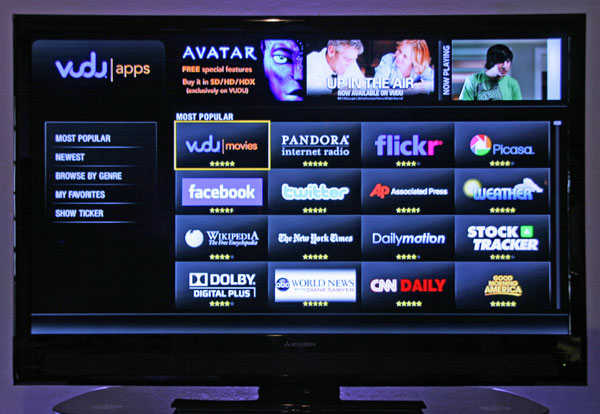
Like virtually all TV companies, Mits is expanding its access to online content with over 100 apps, up from four last year. And all but the entry-level Unisen LCD TVs incorporate Bluetooth audio streaming from iPods, Blackberries, and other such devices to take advantage of IST.
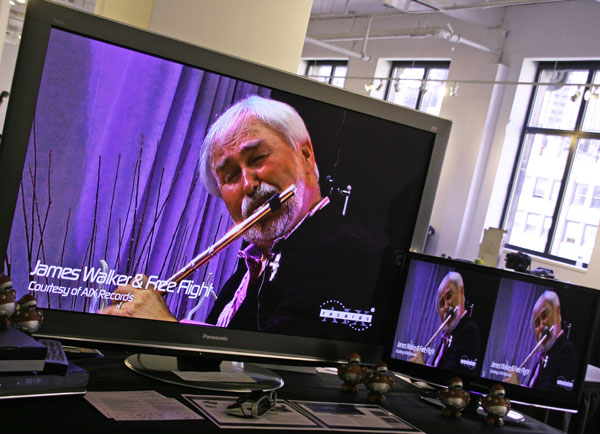
Last week, I wrote about THX Media Director, a technology that automatically sets various parameters in video displays and audio systems to optimize the playback of any digital content by including metadata with the content itself. At the CEA Line Shows, I got to see a demo of Media Directora PVR was playing 3D clips from the most recent AIX recording sessions (which I attended and wrote about here) on a Panasonic TC-P50VT25 3D plasma.
The clips were encoded in the side-by-side format that will be used by most 3D broadcasts. In the photo above, you can see the large plasmawhich we put in 2D mode for the photoalong with a smaller monitor showing the side-by-side image. This format splits the horizontal resolution between the left and right eyes, but it allows a 3D signal to use the same bandwidth as a high-def 2D image. These clips were quickly made for this demo, and of course, the final Blu-ray release will provide full HD resolution for each eye.
During the clips, the TV automatically engaged the correct 3D mode and switched to 2D when the PVR's menu appeared. You might be wondering why this is a big dealafter all, when you play a 3D Blu-ray on a Panasonic 3D player and TV, the TV automatically selects 3D mode; the same is true with Samsung and, presumably, Sony systems. But in these cases, the automatic switching only happens if you have the same brand of player and TV.
The goal of THX Media Director is to make this sort of automation universal across all brands. The demo used a non-Panasonic PVR, and one clip purposely had no Media Director metadata; on that clip, the TV didn't switch into 3D mode automatically. And Media Director goes way beyond 3D to include all sorts of parameters, such as aspect ratio, surround mode, etc.
Over in the Sony booth, I watched some World Cup soccer in 3D delivered live by DirecTV and displayed on a KDL-55LX900. I saw more motion blur and stuttering than I recall seeing on 3D Blu-ray and theatrical movies, and the whole picture just didn't seem to completely coalesce.
As I was watching, I happened to tilt my head a bit and was surprised to see a lot of crosstalkthe left and right images in both eyeseven at very small angles. All LCDs, including flat panels and active-shutter glasses, polarize any light passing through them, but up to then, I hadn't realized that this would affect the 3D image when the glasses and screen weren't properly aligned.
Later, I was watching a Samsung 3D TV with Samsung glasses in the Monster booth, and instead of seeing crosstalk, the image got darker as the angle of my head increased, until it was completely blacked out at 90 degrees. A Monster rep explained that manufacturers can choose one of two head-tilt "failure modes" when designing 3D LCD TVs and glassescrosstalk or darkening. He didn't know the difference between these two options, but I intend to find out. (Clearly, it has something to do with linear polarization.) Meanwhile, it's important to understand that this problem does not affect plasma or DLP 3D displays because they do not polarize the light.

As I walked out into the muggy late-afternoon heat after the show closed, I was struck by the enormity of the Empire State Building directly across the street. It reminded me of the enormous campaign to promote 3D in the theater and home that was so evident during the last two days.
As discussed at the closing summit, content creators and hardware manufacturers are all pushing 3D hard despite its chicken-and-egg problemstudios don't want to spend money on 3D titles until there's an established base of hardware, and manufacturers need content to sell hardware in any real volume. Perhaps this is why the first 3D Blu-ray titles are being included only in exclusive bundles with 3D TVs and Blu-ray players.
Why not just release 3D titles, which can be played on 2D players, and wait for the market to catch up? Because the color timingpost-production lingo for color adjustmentis different for 2D and 3D, especially since 3D displays introduce pronounced color shifts. So playing a 3D disc on a 2D display results in incorrect colors, which consumers would probably not appreciate.
Still, consumers are flocking to 3D theatrical releasesToy Story 3 made $110 million in its opening weekend, and 60 percent of the audience saw it in 3D despite the higher ticket prices. And interest in 3D at home is very highwell over 80 percent according to market-research firm Insight Mediaso I will continue to cover 3D as much as possible
I remain convinced that the CEA Line Shows event is a valuable resource, allowing exhibitors to show off their stuff to journalists and other industry insiders without incurring the cost of a separate line show. I hope that more companies take advantage of this opportunity next year, and I look forward to seeing how the industry evolves by then.
























































